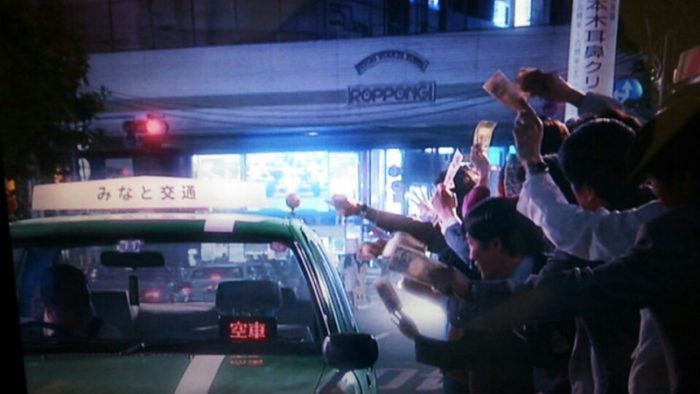Published in the Nikkei Asian Review 8/3/2017
Has Japan finally got over the trauma of its two lost decades? The stock market seems to think so. Last month the Nikkei Jasdaq Index, the Japanese equivalent of America’s Nasdaq, hit an all-time high in US dollar terms.
This may not seem like a big deal until you consider how long it took to chalk up the new record. The previous peak was in 1990, at the height of Japan’s frenzied bubble economy. In the lead-up to that spectacular flame-out, the index had soared 10x in five years!
The Japanese bubble was the product of a deeply unreal historical moment. In the Roppongi entertainment district, young Japanese salarymen would wave ten thousand yen notes at taxi drivers, who were wont to refuse to stop for ordinary fare-paying customers. Corporate behaviour was similarly lax. Japanese managements were able to raise capital for next to nothing from the booming warrants market and used the cash to speculate in stocks and real estate, a phenomenon known as “zaitech”.
Confidence was at such extremes that excitable overseas commentators talked of the coming Japanese century, Japan overtaking the U.S. in economic scale and the Nikkei 225 Index hitting 100,000 by the year 2000.
Reality hit back hard, as it tends to do. Japanese stocks embarked on one of the longest and deepest bear markets seen anywhere. The Nikkei Jasdaq Index was not spared. It fell 85% from its peak to its trough. The economy juddered to a halt too, falling into a morass of stagnation and financial crisis which left nominal GDP no higher in 2012 than it had been in 1993.
No Lament for La-La Land
If today’s sober valuations and sentiment are any guide, a repeat performance seems unlikely. The Nikkei Jasdaq’s price-to-book ratio of 1.33x and price-to-earnings ratio of 16X (excluding loss-making companies) are a far cry from the stratospheric valuations that prevailed in the la-la land of late 1980s Japan.
Likewise, the mood remains wary, with nobody celebrating the new highs with sushi and sake sprinkled with gold flakes, as was popular back then. Rather than running punting funds, Japan’s corporate managements have been hoarding cash and are now starting to buy back their own shares. Today’s excitable foreign commentators tend to predict disaster for the Japanese economy, not triumph, with some going as far as to compare Japan, the world’s largest creditor nation, with Greece. Meanwhile Tokyo taxi-drivers have just cut the flagstop fare by 40% in an effort to drum up business from stingy salarymen.
Small capital stocks, such as those listed on Jasdaq, inevitably command less attention than their supersized brethren. The woes of industrial behemoths such as Sharp and Toshiba feature prominently on the business pages of the world’s press, while solid results from squadrons of smaller companies excite little interest, except from those who invest in them. In the process of creative destruction that is supposed to characterize capitalism, the destruction is always noisier and more eye-catching than the creation.
The Small Leading the Large?
There are at least three reasons why the performance of small capital Japan deserves more attention. The first is that small companies are far more representative of domestic conditions than blue chips, which are often highly exposed to overseas markets and factors. Japan is a small company economy – three times as many Japanese work for small enterprises with under 20 employees as do for large manufacturers. The sector breakdown of Jasdaq is closer to Japan’s economic structure, with a weighting of 25% in manufacturers and financial companies versus 50% in the larger market. Furthermore the manufacturers tend to be specialist niche players with little in common with the sprawling industrial empires currently hogging the headlines.
Second, small stocks are the favoured vehicles of individual investors, who account for about half of total trading, against some 15% in the larger market, which is dominated by proprietary capital and black-box traders. Smaller companies tend not to be involved in the elaborate web of cross-shareholdings either, which is why individuals own roughly half of Jasdaq equity. Japan’s nascent equity culture was destroyed by the speculative excesses of the bubble era and the epic bear market that followed. The vibrancy of the market in small capital stocks shows that a resurrection of animal spirits is possible.
The last point is that smaller capital stocks can be leading indicators. The U.S.’s Nasdaq index rose 500% between 1974 and 1983, a period in which the S&P 500 index was locked in a dismal bear market. The larger market woke from its long slumber in 1983 and embarked on a turbo-charged bull run that peaked out at the turn of the century. There is some evidence that Japanese small capital sticks have similar predictive power. The Nikkei Jasdaq Index hit bottom in 1998, a full 10 years before the Nikkei 225.
Needless to say, this doesn’t mean that it is always a great idea to invest in small capital stocks, as Nasdaq showed by underperforming the S&P 500 substantially between 1983 and 1990. Every cycle offers different risks and opportunities.
The environment for risk-taking is improving in Japan. Since 2012 there has been a steady recovery in nominal GDP and the social mood has brightened, as is attested by the continuing decline in the suicide rate, now down by one third since the dark days of the early noughties.
Legendary investor Sir John Templeton once stated that bull markets are “born in despair, grow amid scepticism, mature amid optimism and die amid euphoria.” Japan today is somewhere between phases two and three. Despair has faded, but euphoria is not yet in sight. The time to worry will be when you notice the gold flakes on your sushi.


